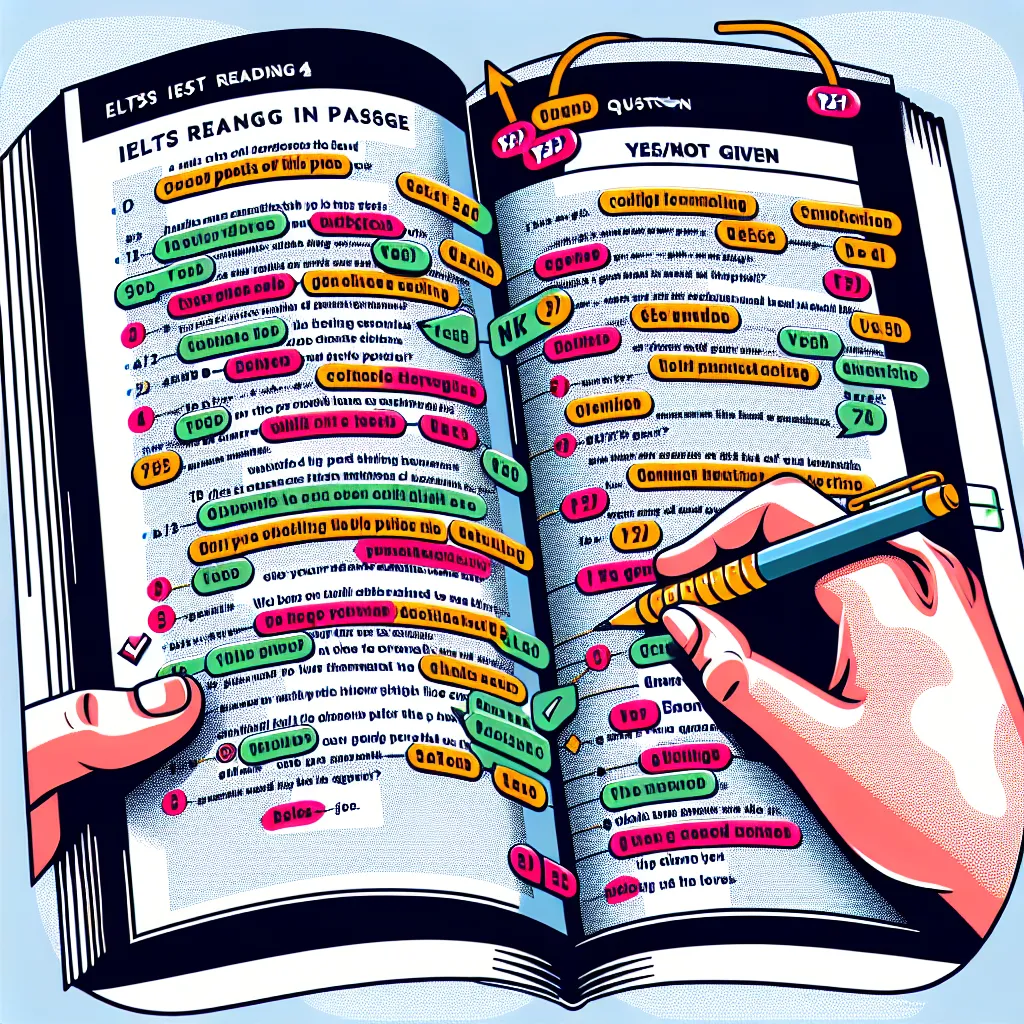Are you struggling with Yes/No/Not Given questions in the IELTS Reading section? You’re not alone. Many test-takers find these questions challenging, but with the right approach, you can master them and boost your IELTS score. In this comprehensive guide, we’ll explore effective strategies to tackle Yes/No/Not Given questions and help you succeed in your IELTS Reading test.
Understanding Yes/No/Not Given Questions
Yes/No/Not Given questions are a common type of question in the IELTS Reading test. They assess your ability to identify information and opinions in a passage and compare them with given statements. To answer these questions correctly, you need to understand the subtle differences between the three possible answers:
- Yes: The statement agrees with the information in the passage.
- No: The statement contradicts the information in the passage.
- Not Given: There is no information about the statement in the passage.
 IELTS Reading Yes/No/Not Given question example
IELTS Reading Yes/No/Not Given question example
Key Strategies for Answering Yes/No/Not Given Questions
1. Read the Questions First
Before diving into the passage, read the questions carefully. This will give you an idea of what information to look for when you start reading the text.
2. Scan the Passage
Quickly scan the passage to locate the relevant information for each question. Look for keywords or synonyms from the questions in the text.
3. Analyze the Information Carefully
Once you’ve found the relevant part of the text, read it carefully and compare it with the statement in the question. Pay attention to the following:
- Exact matches: Look for statements that are directly stated in the text.
- Paraphrasing: Recognize when the same information is expressed using different words.
- Contradictions: Identify statements that directly oppose information in the text.
4. Watch Out for Qualifiers
Pay close attention to words that qualify statements, such as “all,” “some,” “always,” or “never.” These can change the meaning of a statement and affect whether it’s a Yes, No, or Not Given answer.
5. Be Cautious with “Not Given” Answers
Many test-takers struggle with identifying “Not Given” answers. Remember, “Not Given” means there’s no information in the text to confirm or contradict the statement. Don’t make assumptions based on your own knowledge or opinions.
6. Practice Time Management
Yes/No/Not Given questions can be time-consuming. Practice allocating your time effectively to ensure you have enough time to answer all questions in the Reading section.
Common Pitfalls to Avoid
-
Overthinking: Don’t read too much into the text or make inferences beyond what’s explicitly stated.
-
Relying on Prior Knowledge: Base your answers solely on the information provided in the passage, not on what you already know about the topic.
-
Ignoring Context: Consider the context of the information in the passage, as it can affect the meaning of statements.
-
Rushing: Take your time to carefully compare the statement with the information in the text.
-
Misinterpreting Paraphrasing: Be aware that the same information can be expressed in different ways. Look for synonyms and rephrased ideas.
 IELTS Reading strategies
IELTS Reading strategies
Practice Exercises
To improve your skills in answering Yes/No/Not Given questions, try these practice exercises:
- Find sample IELTS Reading passages and create your own Yes/No/Not Given questions.
- Time yourself while answering practice questions to improve your speed and accuracy.
- Analyze official IELTS practice tests and study the correct answers, paying attention to why each answer is Yes, No, or Not Given.
Next Steps
Now that you understand how to approach Yes/No/Not Given questions, it’s time to put your knowledge into practice. Here are some steps to further improve your skills:
- Regularly practice with official IELTS Reading materials.
- Review your mistakes and understand why you got them wrong.
- Expand your vocabulary to better understand paraphrasing in texts.
- Take full-length IELTS Reading practice tests to improve your time management.
Remember, mastering Yes/No/Not Given questions is just one part of succeeding in the IELTS Reading test. Be sure to familiarize yourself with other question types and continue to improve your overall reading comprehension skills.
By following these strategies and consistently practicing, you’ll be well-prepared to tackle Yes/No/Not Given questions in your IELTS Reading test. Good luck with your IELTS preparation!
[internal_links]




